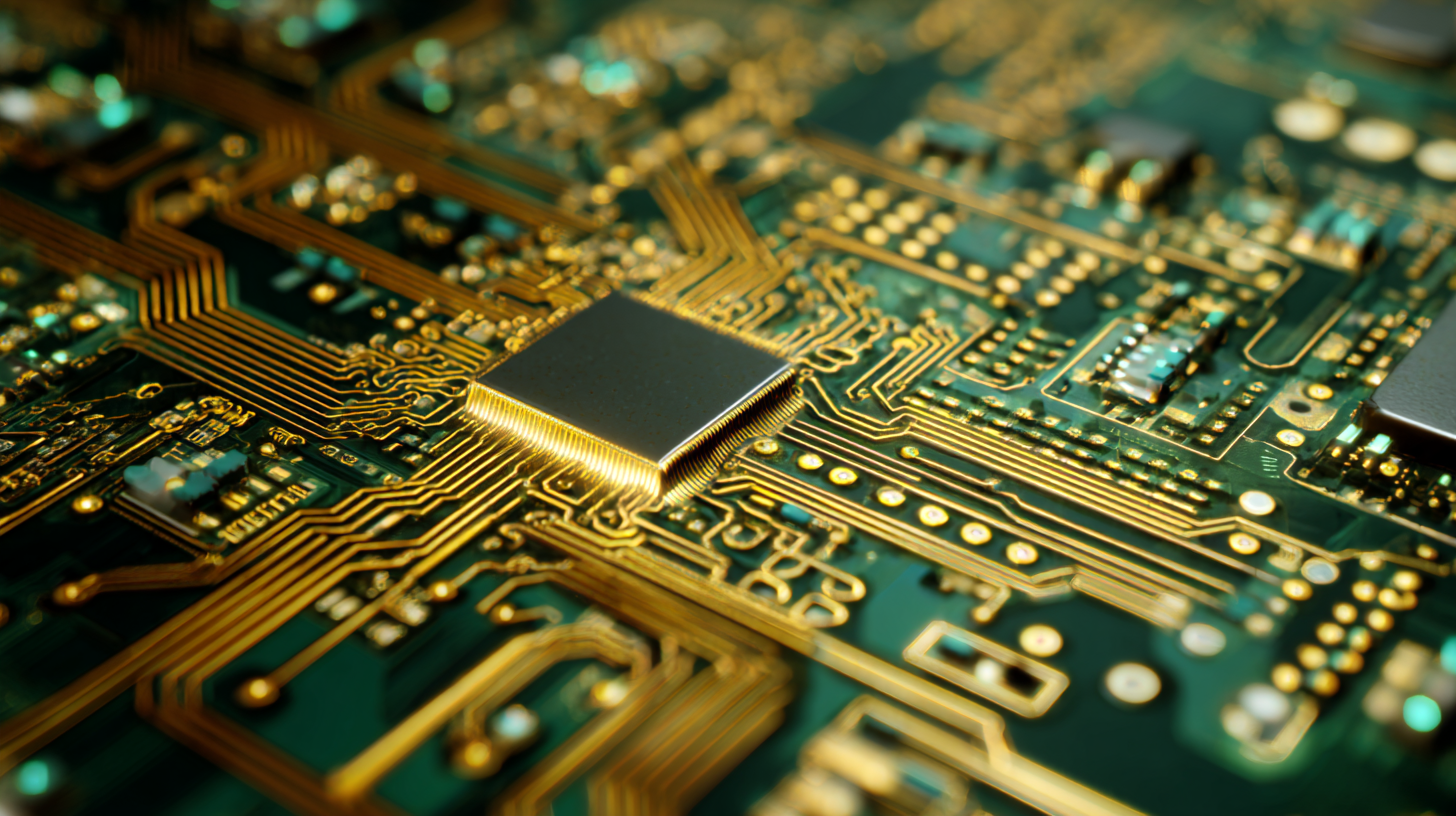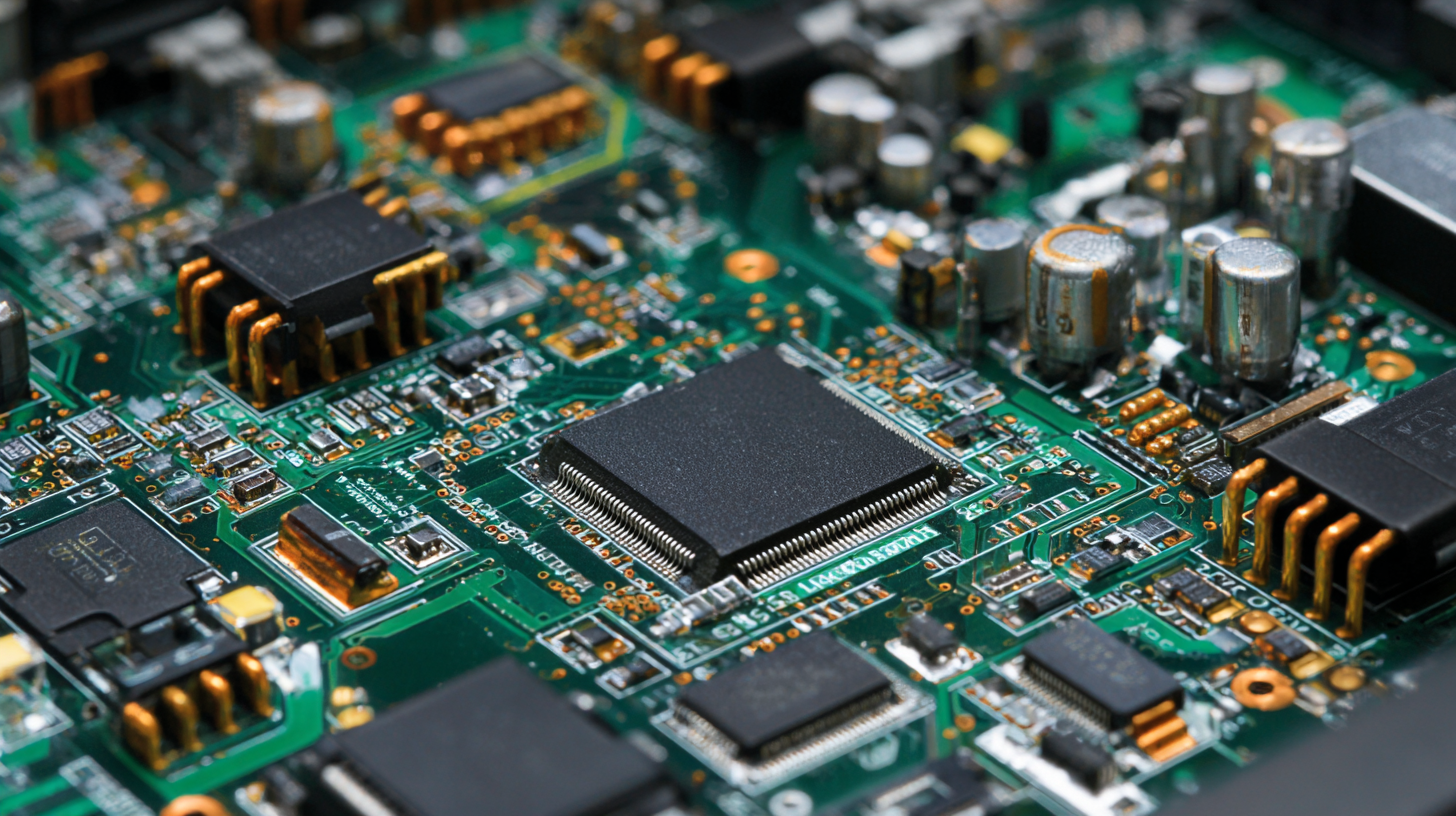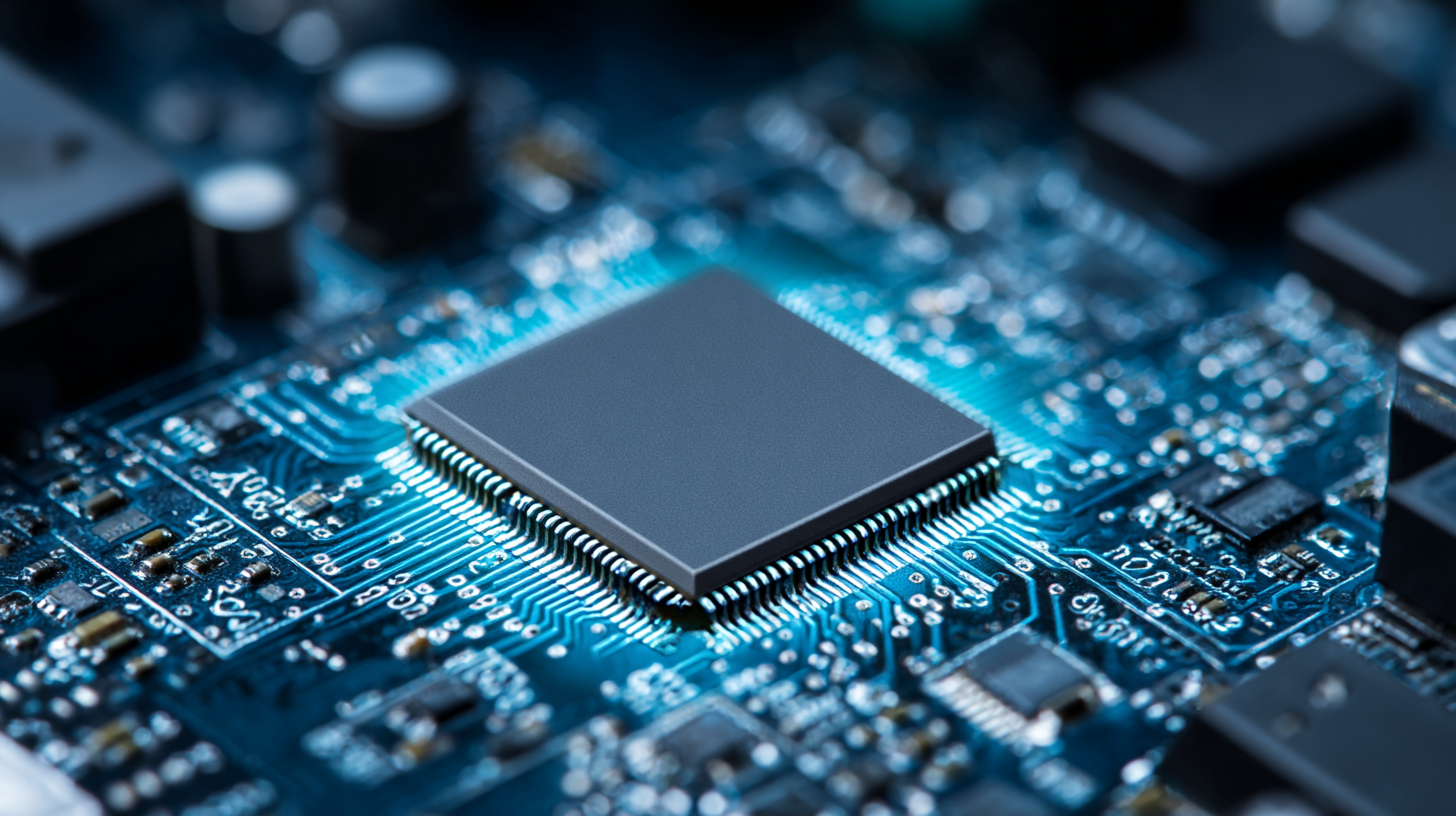In the rapidly evolving electronics industry, cost-effective solutions have become paramount for manufacturers seeking to enhance their competitive edge. According to a recent report by IBISWorld, the global printed circuit board (PCB) manufacturing market is projected to reach $80 billion by 2026, highlighting the growing demand for innovative and affordable PCB solutions. As businesses aim to optimize their production processes, the importance of identifying high-quality suppliers of low cost PCBs cannot be overstated. These suppliers play a critical role in ensuring that companies maintain quality while minimizing costs, ultimately driving profitability in a market that often prioritizes margin over expense.

This blog will explore effective strategies for sourcing premium low cost PCBs, providing insights into how to select suppliers that meet both quality and budgetary requirements, thereby enabling industries to harness the full potential of their electronic applications.
The consumer electronics industry has witnessed a remarkable transformation with the integration of low-cost PCB solutions. These printed circuit boards have not only made devices more affordable but also enhanced their functionality. For instance, innovative smartphones and smartwatches now incorporate sophisticated low-cost PCBs that enable advanced features like biometric sensors and high-resolution displays, making cutting-edge technology accessible to a broader audience.
Tips: When exploring low-cost PCB solutions for consumer electronics, consider the balance between cost and quality. It’s vital to select a reliable manufacturer that uses good materials without compromising on performance. Additionally, prototyping your design can save time and resources, allowing for testing and modifications before mass production.
Another exciting application of low-cost PCBs can be found in smart home devices. With the rise of IoT (Internet of Things), low-cost PCBs serve as the backbone for various smart appliances, from thermostats to home security systems. These boards enable seamless connectivity and data transfer, enhancing user experience while keeping manufacturing costs in check.
Tips: To maximize efficiency, opt for designs that streamline the assembly process. Simplified layouts not only reduce production time but also minimize the likelihood of errors. Lastly, ensure thorough testing to guarantee that your product meets performance standards before entering the market.
This bar chart illustrates the market share percentages of various innovative consumer electronics applications utilizing low-cost PCB solutions. As shown, smartphones dominate the market, followed by wearable devices and home automation systems.
The integration of affordable printed circuit board (PCB) technology into medical devices has become a game-changer in the healthcare sector. According to a recent report by Research and Markets, the global medical device market is expected to reach $612 billion by 2025, and the demand for cost-effective, innovative solutions is driving advancements in PCB manufacturing. With the ability to produce high-quality PCBs at lower costs, manufacturers can now create more accessible medical devices, fundamentally transforming patient care.
For instance, innovations such as flexible PCBs enable the development of compact and lightweight medical gadgets, enhancing portability for patients. A study by the Institute of Electrical and Electronics Engineers (IEEE) indicates that flexible PCBs can reduce production costs by up to 30%, making it feasible to implement them in devices like wearable health monitors and remote diagnostic tools. This transformation not only allows for more competitive pricing but also accelerates the design cycles, enabling quicker responses to emerging healthcare needs while maintaining a high standard of quality and reliability.
 The automotive industry is undergoing a significant transformation, driven by the integration of advanced technologies and the increasing need for cost efficiency. At the heart of this evolution are printed circuit boards (PCBs), which serve as the backbone of modern automotive systems. Cost-effective PCB designs are not just a preference; they are essential for the successful deployment of features like advanced driver-assistance systems (ADAS), electric powertrains, and infotainment systems. By adopting innovative PCB solutions, manufacturers can maintain high performance while optimizing production costs, which is crucial in a competitive market.
The automotive industry is undergoing a significant transformation, driven by the integration of advanced technologies and the increasing need for cost efficiency. At the heart of this evolution are printed circuit boards (PCBs), which serve as the backbone of modern automotive systems. Cost-effective PCB designs are not just a preference; they are essential for the successful deployment of features like advanced driver-assistance systems (ADAS), electric powertrains, and infotainment systems. By adopting innovative PCB solutions, manufacturers can maintain high performance while optimizing production costs, which is crucial in a competitive market.
Recent advancements in PCB technology have opened up new avenues for automotive applications. For instance, the use of flexible PCBs allows for the incorporation of complex circuitry in confined spaces, enabling the design of sleek, high-tech interior controls and displays. Additionally, advancements in materials and manufacturing processes have led to lighter and more durable PCBs, suitable for electric vehicles that prioritize energy efficiency. These innovations not only enhance the functionality and reliability of automotive systems but also contribute to the overall reduction of vehicle weight, thereby improving fuel efficiency and driving range. Through effective PCB design, the automotive industry is poised to achieve remarkable advancements without compromising on affordability.
The advent of home automation technology has transformed how we interact with our living spaces, and innovative PCB solutions play a crucial role in this evolution. Utilizing low-cost printed circuit boards (PCBs), manufacturers can develop smart devices that seamlessly integrate into everyday life. From smart thermostats to automated lighting systems, the application of advanced PCBs enhances functionality while keeping production costs manageable.
**Tip:** When designing home automation products, prioritize modular PCB layouts that allow for easy upgrades and maintenance. This flexibility not only extends the product life cycle but also offers consumers the opportunity to adapt their systems as technology advances.
Furthermore, the ability to incorporate wireless communication, such as Wi-Fi and Bluetooth, into compact PCB designs elevates the user experience. With these capabilities, devices can communicate with each other, allowing for synchronized control and automation.
**Tip:** Incorporate energy-efficient components into your PCB design; this not only reduces power consumption but also appeals to environmentally conscious consumers looking for sustainable home automation options. By utilizing innovative PCB solutions, businesses can create smarter, more efficient homes that cater to the demands of modern lifestyles.
| Application Type | Key Features | Cost Efficiency | Market Trend |
|---|---|---|---|
| Smart Lighting Control | Remote access, scheduling, energy saving | Low-cost sensors and wireless modules | Growing demand for energy-efficient solutions |
| Home Security Systems | Real-time monitoring, mobile notifications | Affordable camera and sensor integration | Increased awareness of home security |
| Climate Control Systems | Automated temperature regulation | Cost-effective smart thermostats | Rising interest in smart home technologies |
| Voice-Activated Assistants | Hands-free control, AI integration | Low-cost microcontrollers | Expanding market for voice technology |
| Home Energy Management Systems | Energy monitoring, cost reduction | Economical energy tracking devices | Interest in sustainable living |
In today's rapidly evolving industrial landscape, the integration of
low-cost PCB solutions is revolutionizing automation processes.
Companies are increasingly leveraging these budget-friendly printed circuit boards to streamline operations and enhance productivity.
By opting for cost-effective PCBs, manufacturers can reduce production costs without compromising on quality, allowing for more agile responses to market demands.
The flexibility offered by low-cost PCBs also plays a pivotal role in the realm of
industrial automation. They enable seamless integration of advanced technologies, such as IoT devices and robotics, into existing systems.
This adaptability encourages innovation, as businesses can experiment with new applications and technologies without a hefty investment.
As a result, automation can be tailored to meet specific operational needs, driving efficiency and improving overall performance in manufacturing and production environments.

Explore how low-cost PCBs are driving transformative changes in industries, enhancing efficiency and innovation. These solutions are essential for adapting to the fast-paced demands of modern markets, proving beneficial for businesses looking to optimize their automation strategies.
„Thanks to the LUVIR technology, the solder resist process could be switched directly from the previously used mask exposure to direct exposure. As an outstanding digital solution on the market, this technology has been able to demonstrate fast process times and superior quality on our certified conventional ink in production. This allowed us to fully digitize the solder mask process at low cost – without process or ink adjustments. An excellent benefit to our production in Rot am See.“
Ralf Göhringer (Head of Production WE Rot am See)
I would definitely recommend the Limata machine and team for a future company purchase
Michael Greenaway
Compunetics Inc.
“The Limata ldi has been amazing!! Best thing we did was buy this machine”
Richard Brady
GM
Circuitlabs
“Since 2019, we have been running the Limata X1000 LDI system (including LUVIR for solder mask imaging) in daily production as an addition to our current process with film. The machine was capable of properly exposing Taiyo PSR-4000 BN (DI) solder mask types on normal to high-copper boards using a new and unique direct imaging process. The machine operating interface is very user friendly which allowed for a quick technical training curve. The pre-registration processing reduced several seconds of production time at every print. Limata support and service staff is incomparable. They supported our team every step of the way at basically any time of the day or night, with literally, an immediate response time, customizing the software interface to best fit our Operations and needs.
We have exposed more than 8,000 prints since end of October, on various solder mask colors and some resist film panels. Limata, has proven to be very capable and innovative. They are a strong contender in the industry.
We have very much enjoyed this project, and working with the team!
Thank you Limata for the continued support and being a part of our growth.”
Bill Sezate
Vice President, GM
Summit Interconnect
As a replacement to our current contact exposure process with film, the LIMATA X2000 system including LUVIR-Technology was capable of properly exposing non-LDI solder mask types using a direct imaging process. The machine offers cutting edge software with a very intuitive operating interface which allowed for quick technician training curve. The dual drawer system combined with pre-registration processing reduced several seconds of production time at every machine cycle. Limata support and service staff is world class. They added software patches to keep production running at shortest possible response times, customized the software interface to best fit our in-house Operations system, and even wrote a step-by-step machine processing manual. As a result of the project, we have exposed more than 16,000 times on various product types and solder mask brands/colors. Limata, in a very short timeframe as a company, has definitely shown they are truly innovative and will be challenging the industry of direct imaging for the top spot.
Kevin Beattie
Process Engineer
TTM Technologies
Forest Grove Division